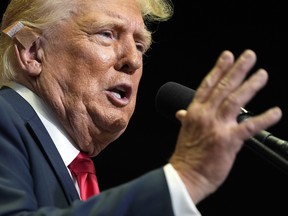The article discusses the economic policies proposed by former US President Donald Trump, known as "Trumponomics," which aim to reshape America’s economy. The key components of Trumponomics include:
- Tax cuts: Trump proposes significant tax reductions for individuals and corporations to boost economic growth.
- Deregulation: He plans to roll back regulations in various sectors, including finance, energy, and healthcare, to promote business competition and innovation.
- Infrastructure spending: Trump wants to invest heavily in infrastructure projects, such as roads, bridges, and airports, to create jobs and stimulate economic growth.
- Trade protectionism: He advocates for a more protectionist trade policy, including tariffs on imports from countries like China and Mexico, to promote American manufacturing and reduce the trade deficit.
However, critics argue that these policies could have negative consequences, such as:
- Increased inequality: Tax cuts for the wealthy could exacerbate income inequality, while deregulation may benefit corporations at the expense of consumers.
- Higher debt levels: The proposed infrastructure spending and tax cuts would add to the national debt, potentially leading to higher interest rates and reduced government flexibility.
- Trade wars: Protectionist trade policies could lead to retaliatory measures from other countries, harming American exporters and sparking a global trade war.
Economists warn that any attempts by Trump or his successor to undermine the Federal Reserve’s independence could have far-reaching consequences, including:
- Market volatility: Interference in the Fed’s decision-making process could rattle markets, leading to higher inflation and reduced investor confidence.
- Inflation expectations: Weakening the dollar through monetary policy would likely boost inflation expectations, making it more difficult for the Fed to control inflation.
The article concludes that while Trumponomics may appeal to some voters, its potential consequences should be carefully considered, and policymakers must prioritize evidence-based economic policies over ideological commitments.




